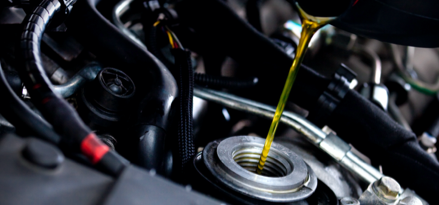
Importance of engine coolants
We know how important it is to keep our cars in good working condition, all the way from checking tire tread to using the right engine oil, and regular car servicing. But your engine actually needs another fluid to run smoothly, and that’s coolant.
1. What is a coolant?
An engine coolant is typically made up of 50% water and 50% glycol. Commonly known as antifreeze, it ensures that your coolant neither freezes nor boils – a property that is extremely important for your engine.
2. Why does your engine need it?
Antifreeze ensures that your engine temperature remains stable to perform well in all climates. An added bonus of engine coolant is that it also prevents rust and the corrosion of metals (that are not iron or steel), in the radiator, engine and heater.
3. Which coolant should you use?
The first step should always be to consult your vehicle owner’s manual to verify which coolant works best for your car. There are three types of coolants and they can sometimes come in different colors.

Hybrid Organic Additive Technology (HOAT)
Comes in a range of colors from yellow orange, amber, blue, pink, red or purple and should be flushed every 200,000km. This coolant is designed for newer cars, and recommended in BMW, Audi, Volkswagen, Porsche, Jaguar, Land Rover, Volvo and also Asian-manufactured cars such as Honda, Perodua and Toyota.
4. When do you check your coolant level?
You should check your coolant level twice a year and preferably before the “Check Coolant” signal lights up on your dashboard, or before the fluid turns a murky brown.
5. How to check and add coolant into your car?
After any journey, allow 30 minutes for your engine to cool before opening the hood of your car to check or change out the coolant. To be safe, use a rag to unscrew the cap of the coolant reservoir halfway. Then, pause a moment before unscrewing it the whole way.
(Caution: do not unscrew it all at once as the coolant may bubble to the surface and burn you.)
- Look for a semi-translucent white tank filled with a bright green, pink, orange, red or yellow liquid
- Your coolant level should fall between the two safe levels indicated on the side: “Max” and “Min”
- If it’s slightly below the mark, add a few milliliters of water. But if you need to add more than a liter of water, you should be adding a coolant instead.
- Place a funnel inside the reservoir and add coolant till the “Max” line
- Close the cap of the coolant reservoir, and firmly tighten it.
If it’s the first time you’re changing the coolant yourself, ensure someone experienced is around to assist you. Or, ask your mechanic to teach you how to do it to save yourself from future trips to the workshop.
Related Articles
-

Understanding engine oil
Mineral or synthetic engine oils? Viscosities and certifications? This guide can help you choose the best engine oil for your car.
Learn more -

Check product authenticity with Mobil™ Anti-Counterfeit
Protect yourself from counterfeit products. Use this secure, copy-proof code to confirm the authenticity of Mobil lubricants you buy.
Learn more -

Our products
Explore the full line of Mobil™ products to discover how they can help you get the most out of your vehicles and equipment.
Learn more


